4 delicious ways to cook with and preserve yuzu: Plus ponzu dipping sauce recipe
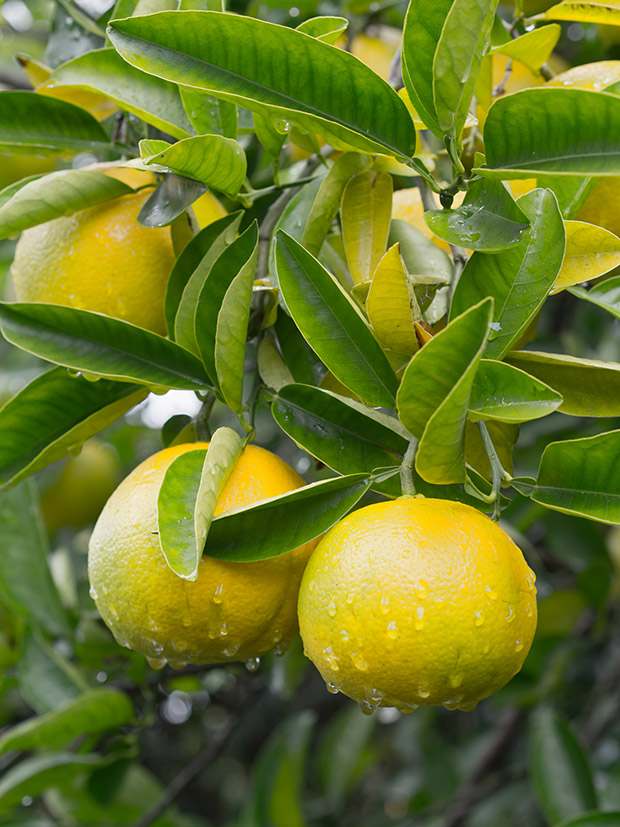
This lesser known citrus is easier to use in cooking than you may think.
Words: Nadene Hall
Yuzu is popular in Japan. The soft, floral zest of ripe fruit is grated or shredded, and sprinkled on noodles, salad, soup, drinks and meats or mixed into mayonnaise, aioli and baking. Junko Chun, a yuzu grower in Horowhenua, uses a little fresh zest on top of fish dishes. Yuzu is also preserved in sugar and added to sweet dishes and drinks.
“It’s really hard to describe the taste, sort of a combination of grapefruit, orange, lemon, and mandarin,” says her husband, Neville. “They’re not fleshy. If you cut one open, you’ll think ‘what is this all about?’
READ MORE: How to grow yuzu in New Zealand
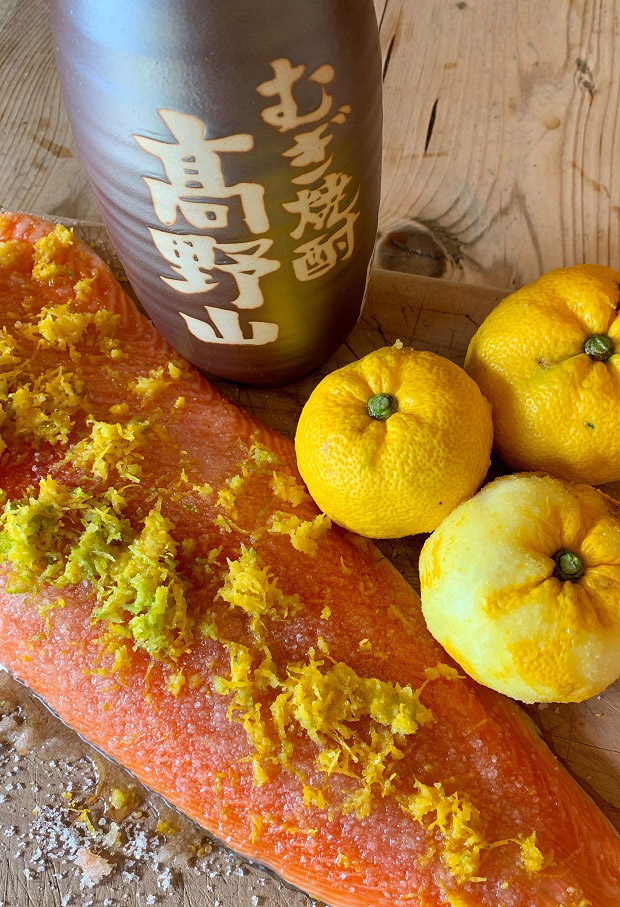
Yuzu grower Junko Chun loves sprinkling fresh yuzu zest over fish. Image: William Chun, Neville Chun
Pete and Ian Gillespie, founders of Wellington artisan brewing company Garage Project, bought the Chuns’ first crop and have since won awards for a range of yuzu-flavoured ales.
Martinborough olive grower Nalini Baruch, of Lot Eight, is another customer. Nalini was the first in the world to use yuzu in the agrumato method (crushing citrus with fresh olives). Nailini crushes yuzu skins with the olives, then presses them together to create a fragrant oil.
The Japanese also use the green (unripe) fruit. “Green yuzu have a really strong, peppery-lime taste, almost like a kaffir lime with pepper,” says Neville. “The juice is very sour and intense, almost green in colour and the Japanese really relish that.”
The green peel is used as a savoury flavouring or in condiments such as Yuzu Kosho, a type of mustard.
Recipe: Yuzu Cha (Tea)
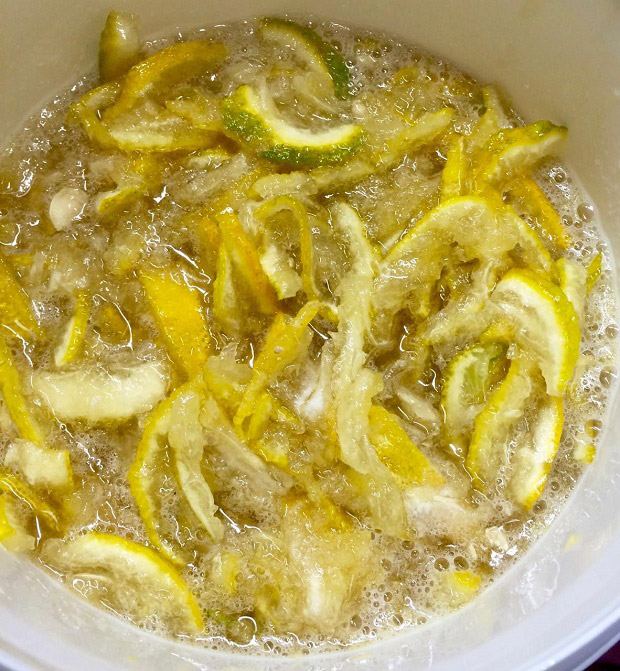
Freshly made yuzu cha. Image: William Chun, Neville Chun
This cold-cured method preserves yuzu to flavour drinks, desserts and for use in baking.
INGREDIENTS
Yellow yuzu
Organic sugar
METHOD
Wash the yuzu and cut out any damaged spots on the skin. Cut the yuzu in half. Squeeze out any juice (fruit often have little or no juice or flesh) and save it. Remove and discard the pips, then very finely slice the peel and any flesh.
Weigh the yuzu and juice, then add the same amount of organic sugar and mix.
Spoon into a sterilised jar or container with an airtight lid (but don’t tighten it). Leave on the bench at room temperature for 4-5 days, which allows natural yeasts on the skin to begin to ferment. Stir every day.
On Day 6, place in the fridge to cold cure for 1-2 months. Store in the fridge once open or freeze in ice cube trays or a resealable bag.
Three ways to use:
1. Drizzle over vanilla ice cream, pavlova, and other desserts
2. Add to cold soda water as a flavouring
3. Add a couple of generous spoonfuls to a cup and fill with hot water and add manuka honey and crushed ginger root for a tonic
Recipe: Yuzu Kosho (Mustard)
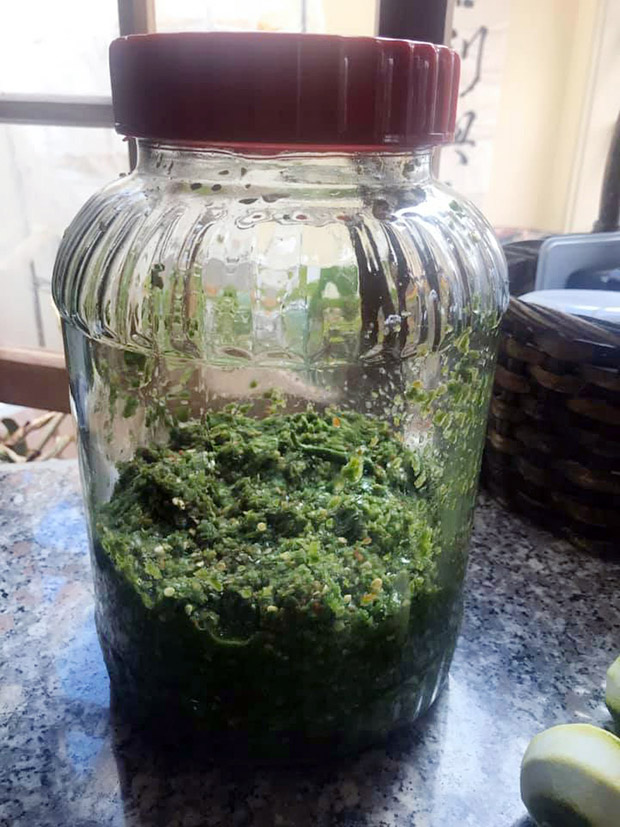
Image: William Chun, Neville Chun
This is another cold-cure preserving method and uses the peel of green yuzu, picked in April-May, made into a paste with green or red chillies. As the chillies are out of season when the yuzu are green, Neville saves his chillies as a salted paste. Weigh the chillies, add 25% of their weight in plain salt, then blitz in a food processor until a paste. Store in the fridge.
Freshly made Yuzu Kosho is inedible as it is extremely salty and burning hot. It needs to cure for at least three months, up to a year, to develop its unique flavour.
INGREDIENTS
70-100g green or yellow yuzu peel or zest
100g green or red chillies
25g salt
METHOD
Wash the yuzu, grate the zest, or peel the skin and chop it up in a food processor. Reserve the juice to make ponzu (recipe below). Mix with chillies and salt.
Store in a sterilised jar with an airtight lid in the fridge for 3 months or longer. Use tiny amounts in hot miso soup or in a dipping sauce.
Recipe: Homemade Japanese Ponzu
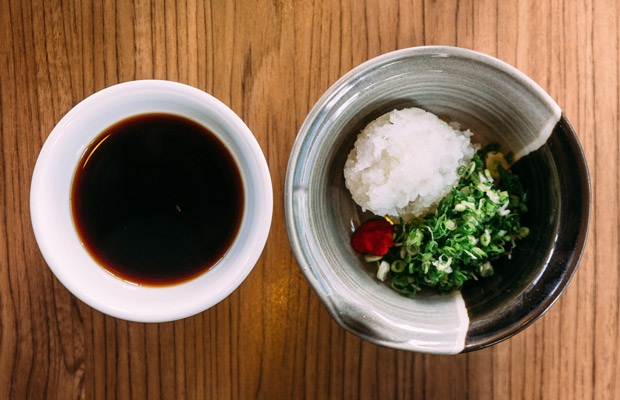
This dipping sauce gives a fantastic depth of flavour. ‘Zu’ (Su) means vinegar, ‘pon’ means punch. Ideally, use the juice from green (unripe) yuzu. Adjust the measurements to taste, as most Japanese cooks will advise, but this is a good base recipe.
Bonita flakes (dried, fermented, smoked skipjack tuna, also known as katsuobushi) and kombu (an edible kelp) are available from Asian food stores.
INGREDIENTS
60ml yuzu juice
60ml rice vinegar
125ml Japanese soy sauce
30ml mirin
½ cup dried bonita flakes
1 piece of kombu
Optional: grate a bit of yuzu zest into the mixture as well
METHOD
Combine all the ingredients in a clean sterilised jar. Mix well. Put into fridge overnight or for up to a week for the ingredients to meld.
Strain the liquid into a sterilised jar with fitted lid and store in the fridge. It will keep in the fridge for 6-12 months if no water is added. Use it as a dressing on meat or fish, or as a dipping sauce.
READ MORE

